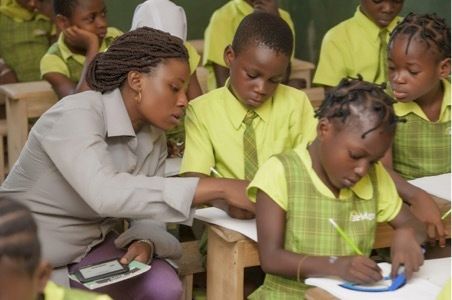The global shortage of schools is truly shocking. Today, most children in the world, hundreds of millions, are not learning the basics as they are either not in school or in a school where they are not learning. A fact recently highlighted by the World Bank’s inaugural report on education. The crisis is worst in sub-Saharan Africa. It is home to more than half the world’s out-of-school children, but it receives only a quarter of global education aid.
The Chair of the global Education Commission, Gordon Brown, has called the learning crisis the ‘civil rights struggle of time’. World leaders are rightly calling on every sector to join the fight - to use all the tools at our disposal to tackle it effectively, win the struggle, and prevent another generation from missing out
Today, 21% of African children and young people are educated in the private sector, with this likely to rise to 25% by 2021. It seems African parents increasingly want or need to invest directly in their children’s education. They embrace the fact that they have a choice when it comes to schools.
Many parents on the African continent are in rural, remote areas; many of the classrooms have poor learning materials and many teachers feel abandoned and can often struggle to understand the content that they are teaching. These are all significant challenges. But technology is now underpinning new and effective ways to tackle them and deliver life changing education to some of the most marginalised communities in the world.
Of course tech is widely used across Africa as organisations seek to innovate. There are thousands of organisations using technology to deliver social impact from healthcare to energy; education to farming. The nature of remote and rural communities, intermittent power and often poor connectivity means developing systems that work despite these challenges. It’s an often daunting task.
In Africa, a social enterprise called Bridge International Academies is delivering education and tackling these challenges head-on. It is putting global teaching best practice straight into the hands of local teachers using e-readers. We are treating learning as a science as we focus on making best practice the standard practice across all our classes. We are focused on how children learn, tweaking adapting and iterating lessons. All through a technology system that uses a 2G mobile signal even in the most remote communities.

By collecting information on what lessons work best, educators can improve lessons for all children. It’s a situation that is powered by the two-way movement of data in near-real time. Ed-tech leaders in many organisations are constantly tweaking content across national borders to maximise learning outcomes for children. The approach means that not only can a few schools be served in a few areas but that tens of thousands of schools and millions of children can benefit.
The use of technology to deliver quality education is bearing fruit in children’s lives. Using Bridge as just one example, the results have been very encouraging. Kenyan pupils sat their primary school leavers’ exam and surpassed their peers in other schools, for the third consecutive year. This is no flash in the pan, as learning gains in Liberia, under a very similar model, showed pupils learning at twice the speed of their peers.
That is what technology offers, the opportunity to scale in a sustainable way without compromising the quality of learning.
Of course, the use of technology in the delivery of education is not without controversy. Despite that, the body of evidence now overwhelmingly suggests that using technology is enabling teachers to radically improve the life chances of children. From the slums of Nairobi to areas affected by the terrorist group al-Shabaab, technology-powered schools are thriving.
